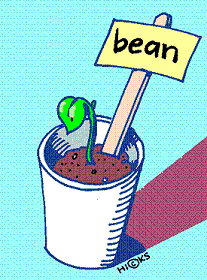
Artichoke Thistle
Amr Majul
Best Viewed using Mozilla Firefox. I.E screws everything up

 |
Artichoke ThistleAmr Majul Best Viewed using Mozilla Firefox. I.E screws everything up |  |
Table of Contents
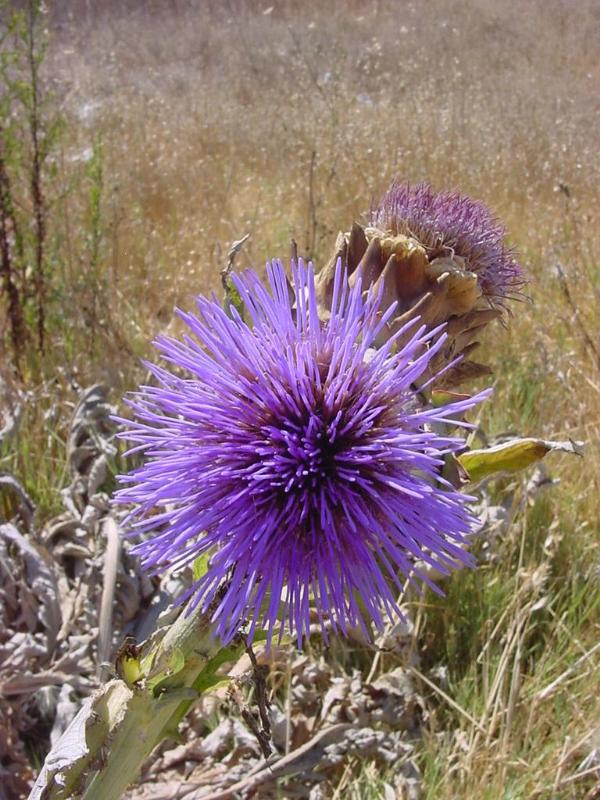 Copyright of Micheal L. Charters. Permission pending approval. |
| COMMON NAME | GENUS | SPECIES | FAMILY | SCIENTIFIC NAME |
| Artichoke Thistle | Cynara | cardunculus | Asteraceae | Cynara Cardunculus L. |
Habitat:-
Open sites in grasslands, chaparral, coastal sage scrub, and riparian areas. Also abandoned agricultural fields. Often associated with overgrazing.
Distribution:-
In the United States, found in low elevated areas of California.
The Cardoon is mostly used as an edible vegetable. While not as popular as its cousin the globe artichoke, it's use is more widespread in Europe. Historically, the Cardoon was a common staple of Europes' lower class diet during the middle ages. Today, it is eaten as a side dish, or salad, often with dips. While the flower of the cardoon has a fleshy center that can be eaten, the stem is the most often used part of the plant. The wild variety of the cardoon takes up a large amount of space. The stem is also covered in small invisible spines, which can make it difficult to handle. For these reasons a cultivated type has been bred that is mostly spineless, but the plant remains a poor choice for a cash crop in the United States. |
The medicinal uses of the plant are limited. Though it does contain cynarin which is reported to have some desirible properties, the plant itself is not used as such because the globe artichoke is a much easier source of this compound, as it is more widespread, and easier to cultivate.
The Cardoon though seems to be the plant of choice for Bio-diseal fuel research. The oil processed from it's seeds is very similiar to other oils that have been tested for fuel use.
Cynarin, the active compound in Cardoon, is what gives the plant its distinctive taste. It is also the active compound that is getting so much attention because of it's detoxifying and cholestrol lowering effects. Recently there has been an explosion of cynarin suplement products, mostly garnered from globular artichoke.
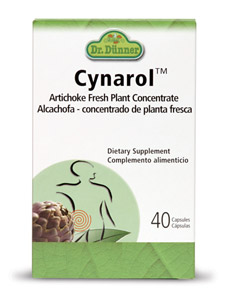
Cynarin's ability to lower cholestrol came to the attention of European scientists in the 1970s. More recently, a study was done in 2000 spanning six weeks, where 143 patients with high cholesterol were given the cyrnarin extract. At the end of the test, results showed a decrease of 10%-15% in total cholesterol, low density lipoprotein. Studies done on rats show a correlation between cynarin ingestion and lowering of toxic compounds in the liver.
The Antioxidant abilities of Cynarin are being extensivly studied. The structure of Cynarin is as follows:-
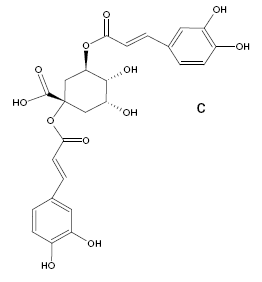
The cynarin is extraceted from the flower part of the artichok.
Serves 4 to 6 Ingredients
| Instructions In a large saucepan, combine the cream, stock, and bay leaf, and season with salt and pepper. Trim the cardoons and cut into 2-inch pieces, placing the pieces immediately into the cream mixture as you go to prevent them from discoloring. When all of the cardoons are in the pan, place the pan over medium heat and bring to a simmer. Cook, stirring occasionally, until the cardoons are tender, about 1 hour. Meanwhile, butter a 4-cup gratin dish. When the cardoons are tender, using a slotted spoon remove the m from the cream mixture and transfer them to the prepared dish, mounding them up slightly if necessary to make them fit. Reduce the cream mixture to about 3/4 cup over medium heat, about 30 minutes. Discard the bay leaf and pour the reduced sauce over the cardoons. Sprinkle the Gruyere on top. About 15 minutes before you are ready to bake the gratin, preheat the oven to 350 degrees Farenheit. Bake until the top is golden and the gratin is bubbling, about 30 minutes. Remove form the oven, let cook for about 5 minutes, and serve directly from the dish. |
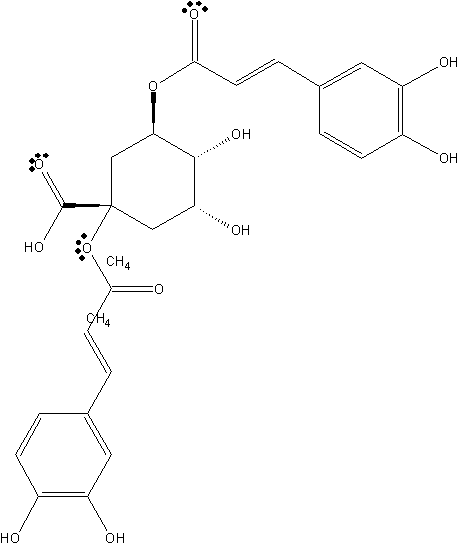
Cynarin, shown above is a polyphenol. Polyphenols are able to acts as antioxidants because of their special properties. They can donate hydrogens and they have metal chelating properties.
Cynarin(1,3-dicaffeoylquinic acid) is a phenol that has been studied for it's antioxidant capabilities.
 |
While no synthesis in Lab has occured in the lab, techniques for the isolation of this compound have been develope, in an effort to find out if cynanin is directly responsible for the antioxidative properties observed in globe artichokes. While the artichoke is the primary food source where Cynarin is obtained, many of the experiments done on cynarin use the Cardoon. One of the methods of identificaation and quantification uses HPLC and mass spectrometric detection |